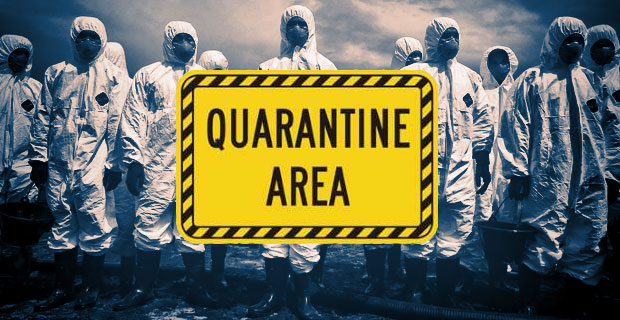 |
| Tom Taylor with his grandson |
The English author, Hilary Mantel's, words ring true today. The social misdiagnosis, or misinformation, of our time includes these myths about Ebola:
1. Ebola clinics give patients injections that kill them faster
2. Schools are using routine blood tests and vaccinations to infect children with Ebola
3. Health officials are spreading the Ebola virus.
 And the list goes on.
And the list goes on. In his guest post, Mr. Thomas C. Taylor, retired Senior Advisor for Generations United’s Seniors4Kids initiative, pulls from his 80-plus years of wisdom to offer a historical context for present events.
Here’s Mr. Tom Taylor:
If you've been following the news, then you know the Ebola outbreak has overtaken the headlines.
The possible state quarantines and public fear of both Ebola survivors and doctors are enough to make you think we’re living the last days – as if we didn’t live through Polio, Yellow Fever and AIDS.
The Ebola scare today is as heightened as it was for polio, once the most feared disease worldwide.
It killed President Franklin D. Roosevelt in 1945. Seven years prior, the U.S. established the National Foundation for Infantile Paralysis, which we know today as The March of Dimes.
I remember the symbolic gesture of my classmates and I, when we marched through our school’s assembly hall and dropped a dime in a basket.
I was a teenager then, living in New Haven, CT. The crippling disease was the Ebola of our time.
The misinformation made people think the crippling disease spread through coughs and sneezes.
Three years after Roosevelt’s death, Dr. Jonas Salk, whose birthday Google recognized last week with a Doodle, developed the first vaccine delivered by injection.
And despite advice to get the shot, many people refused to do so.
The public fear of Polio lasted until 1961, when Dr. Albert Sabin developed an oral vaccine, from which my two children benefitted.
Unfortunately, there is no vaccine for HIV/AIDS, which arrived in the U.S. in the late 1960s.
The misinformation led the Centers for Disease Control and Prevention to report it first as a disease between gay men.
Since then, those claims have been corrected. AIDS hit many famous people including movie star Rock Hudson, who died in 1985.
Countering misinformation today might require us revisiting creative solutions from the past.
With AIDS, a creative solution was the first World AIDS Day in 1988 – the same year tennis legend Arthur Ashe and Magic Johnson, a basketball great, announced they were HIV-positive.
Both men helped raise awareness.
Ashe’s autobiography, in which he stated catching AIDS from a blood transfusion, prompted better screening of blood banks.
Magic Johnson is an inspiration to people living with HIV by not letting the disease stop him from living a successful life.
He’s now part owner of the Los Angeles Dodgers baseball team and owner of the Magic Johnson Theater chain.
Another creative solution to misinformation used the arts to raise awareness of Yellow Fever in a fun way.
I was in first grade when I learned about the Yellow Fever epidemic through a play.
In fact, I played the part of Dr. Carlos Finlay, who, with help from Dr. Walter Reed, developed a cure in 1900.
Finlay, who became a hero when my mom was a child, did this after learning the disease was transmitted by mosquitos.
In addition to being a success, the play taught me the importance of helping people. This impacted how my professional life unfolded, working on behalf of children, youth and families.
The public fear of Polio lasted until 1961, when Dr. Albert Sabin developed an oral vaccine, from which my two children benefitted.
Unfortunately, there is no vaccine for HIV/AIDS, which arrived in the U.S. in the late 1960s.
The misinformation led the Centers for Disease Control and Prevention to report it first as a disease between gay men.
Since then, those claims have been corrected. AIDS hit many famous people including movie star Rock Hudson, who died in 1985.
Countering misinformation today might require us revisiting creative solutions from the past.
With AIDS, a creative solution was the first World AIDS Day in 1988 – the same year tennis legend Arthur Ashe and Magic Johnson, a basketball great, announced they were HIV-positive.
Both men helped raise awareness.
Ashe’s autobiography, in which he stated catching AIDS from a blood transfusion, prompted better screening of blood banks.
Magic Johnson is an inspiration to people living with HIV by not letting the disease stop him from living a successful life.
 |
| Tom at a Seniors4Kids event. |
Another creative solution to misinformation used the arts to raise awareness of Yellow Fever in a fun way.
I was in first grade when I learned about the Yellow Fever epidemic through a play.
In fact, I played the part of Dr. Carlos Finlay, who, with help from Dr. Walter Reed, developed a cure in 1900.
Finlay, who became a hero when my mom was a child, did this after learning the disease was transmitted by mosquitos.
In addition to being a success, the play taught me the importance of helping people. This impacted how my professional life unfolded, working on behalf of children, youth and families.



No comments:
Post a Comment